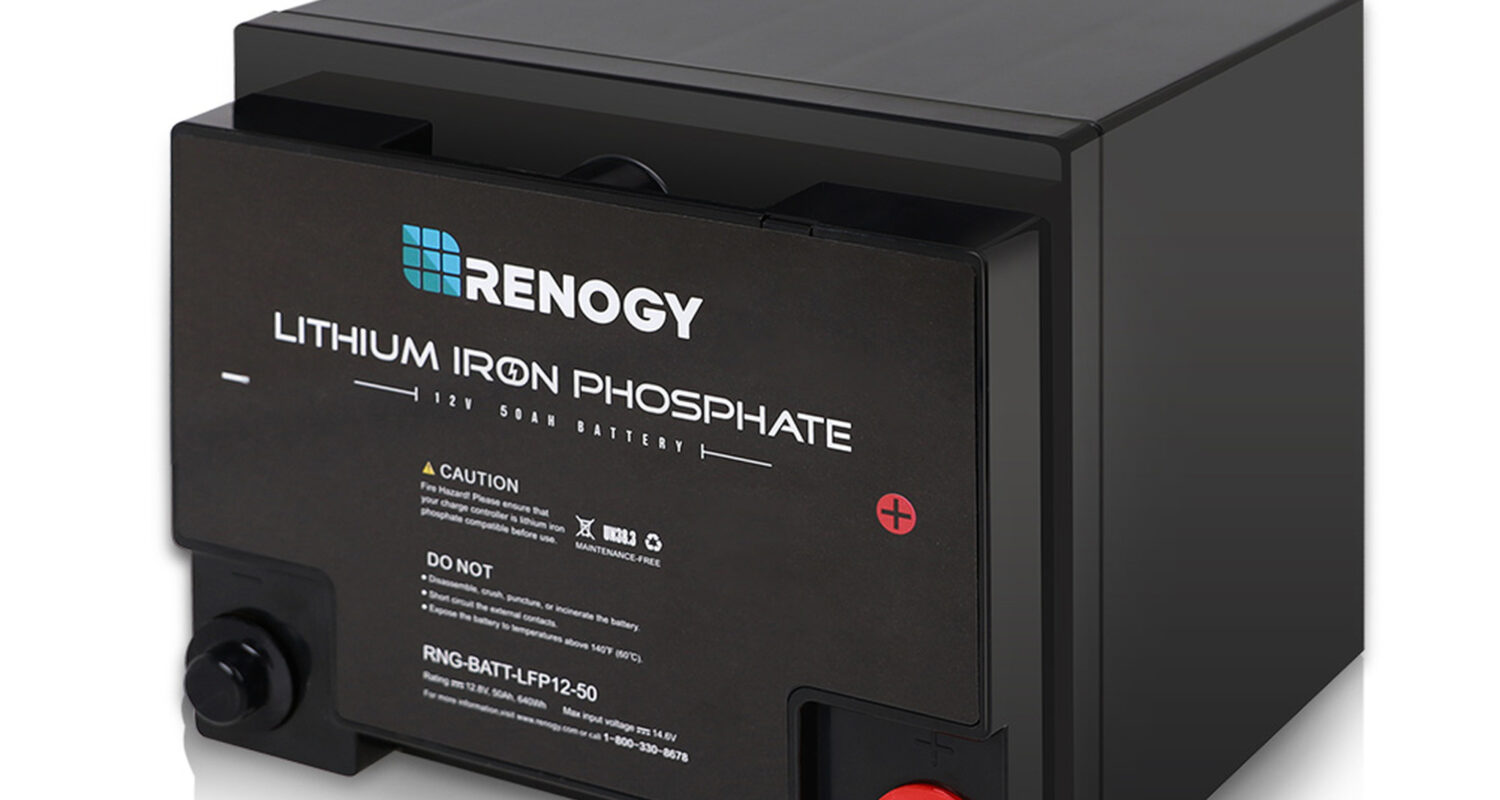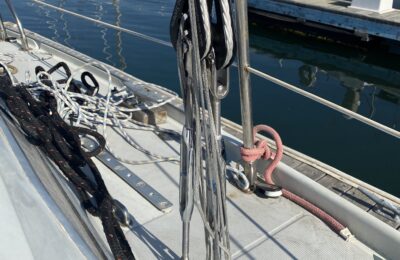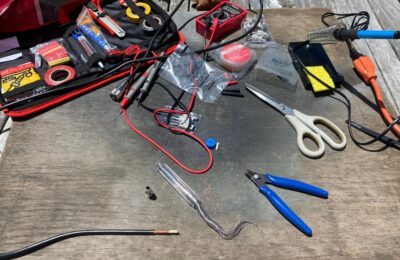Product Selection
For house batteries I believe I can fit two group 24 style 50ah batteries and a small start battery in my aft battery compartment.
House Batteries: Renogy 50ah Lithium 2A
These will be separated as “House Primary” and “House Reserve” batteries.
There seems to be a hierarchy of battery manufacturers in the Lithium marketplace. At or near the top is Victron, a maker of both batteries and a wide range of electronic devices for solar and other DC power products. These are high quality and expensive. Down the list of perceived quality a bit are smaller American manufacturers such as Battleborn or Dakota Lithium. Renogy is a widely known maker of lithium batteries with a range of other solar products as well. Below Renogy in perceived value (my perception anyway) are a range of batteries sold on Amazon, many of which appear to come from the same factory with identical components (see Zooms / Chins / Ampere Time). The 100ah Group 27 battery is something of a benchmark. Here is how costs compare among the listed manufacturers. All have internal battery management systems. The Victron battery is capable of communicating with other networked Victron devices, which is extra and valuable, so this is not an entirely fair comparison:
| Manufacturer | Price |
| Victron | $1,128 (per PKYS web site) |
| Battleborn | $799 (Google sourced price) |
| Renogy | $549 (per google) |
| Zooms | $355 Amazon |
So, there is a wide range of costs. Someone reading this at some point will say, “Yeah but some of those are Chinese JUNK! What about AMERICA?” As one response I suggest that anyone clinging to the notion of American superiority should see the Netflix documentary American Factory and decide whether you want the Americans or the Chinese making your stuff.
Another disparagement of the Chinese batteries is that one might not know what is actually inside of them. Well, there is a small cottage industry niche of guys cutting open batteries. Search YouTube for “Will Prowse”, and you’ll be able to see what is inside of lots of different batteries.
For my boat I decided to pay up (a little and go with Renogy).
I chose 50aH batteries because they will fit in the Group 24 space and because 50amp Lithium is the like-for-like replacement for 78amp Group 24 lead acid flooded batteries. This is due to the depth-of-discharge factor. One is supposed to discharge lead acid batteries no more than 50% of the rated capacity (78/2 = 39 amp hours of use). The Renogy batteries I am purchasing offer a normal operating D-O-D of 80%, or 40amp hours of use.
Starter Battery: Noco NLP14 500Amp Lithium Starting Battery
This battery is only 4” wide and has 500 cranking amps. My Yanmar only needs 460 cranking amps. If somehow I screw up this battery, my carry-along redundancy is a rechargeable Lithium Jumper.
I expect to be able to fit both house batteries and this starter battery into my existing compartment.
Alternator: Hitachi 55amp
Starting out, no change here. My system is built around 35amps of energy use per day. My lithium house batteries will absorb 35amps easily, so an hour of engine time would presumably do the trick. I don’t believe I need a bigger alternator at this point (though I can always go back and add one if need be.
How will I protect the alternator from a BMS shutoff? The problem of a Lithium battery BMS shutdown is the same as someone flipping a 1-Both-2 switch off with the engine on and people have encountered this problem for years.
One solution is a sacrificial diode. Balmar sells them. My favorite part about the West Marine listing is that the only product comment is from a guy explaining how to copy the part for pennies. I think these are one-and-done part so you need several.
Balmar also sells a more sophisticated version with a fuse.
Recently Balmar released a reusable Alternator Protection Device. Balmar alternators themselves are very robust and use something called “Avalanche Diodes” which are more resilient in the face of voltage spikes.
So, I will have one of these solutions for my Hitachi. But what’s to keep me from cooking the brave alternator with current drawing lithium?
External Regulator: Balmar MC618
This is a programmable external regulator that is designed to be able to deal with Lithium batteries. Given the seemingly increasing prevalence of lithium batteries, I find it curious that there are so few alternators on the market intended to charge lithium batteries. Many reviews make programming Balmar regulators seem like an arduous task given their old-timey flowchart interface. This new model can connect to an app via bluetooth and this will hopefully facilitate charging.
Solar System
I have not done a great deal of research in this area, but purchased a 100w Renogy starter kit with a controller to see if I can make everything work. In the event I leave the lights on and the house batteries on, this controller will also help awaken BMS-shutdown low voltage cells.
Chargers
With three different batteries to charge (starter, house 1, house 2) it is entirely possible that I will have three different states of charge, along with the capacity of the starter battery being much smaller than the capacity of the other batteries. The way I intend to deal with this is by having the Balmar regulator charge house #1 directly. It will be the primary use battery and will be filled and drained with the most regularity.
The starter and reserve house battery will be charged via 20amp DC-DC battery to battery chargers from Renogy.
Wires & Fuses
I perused the ABYC wire chart shown at Blue Seas and found that by keeping all of my batteries in the stern battery compartment I would have nice short runs I could run 6awg up to 3 meters for a 70amp load (oversized for my 50amp ecosystem). I bought some 6 gauge and a set of terminal end crimpers from Amazon to make my own cable lengths.
Fuses I need to think through in more detail, but these Blues Seas Marine-Rated-Battery-Fuse blocks seem like a good option and keep a fused connection within the 7” of the battery asked by the ABYC.
All the new toys are arriving in the mail in the next week. Installation fun will be next.



